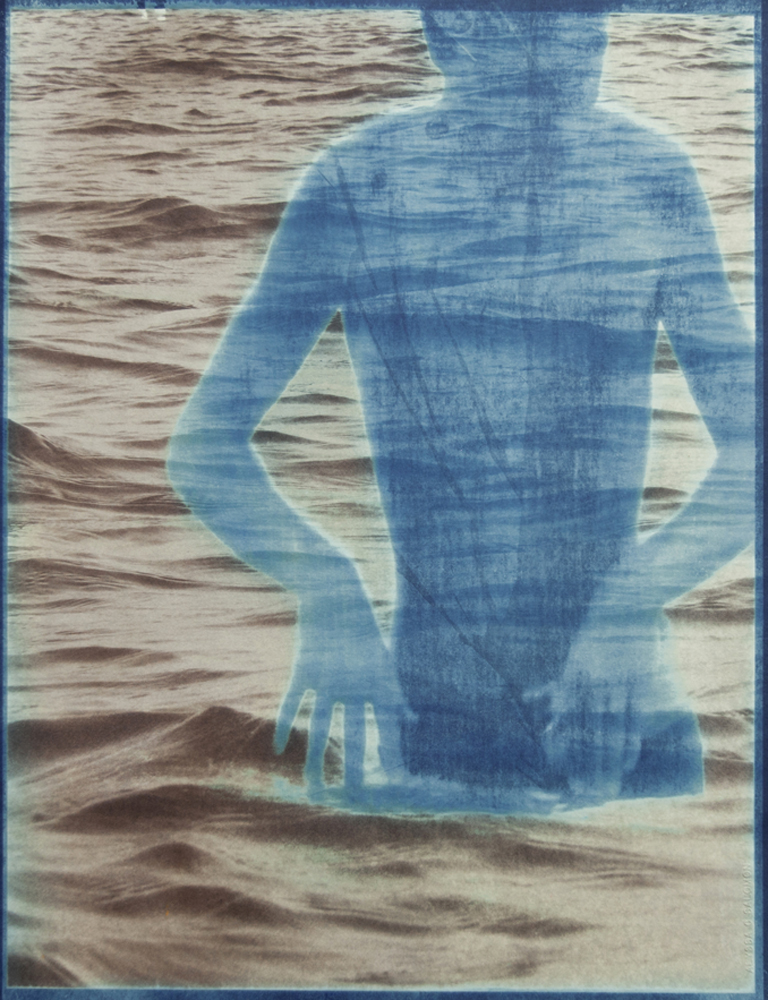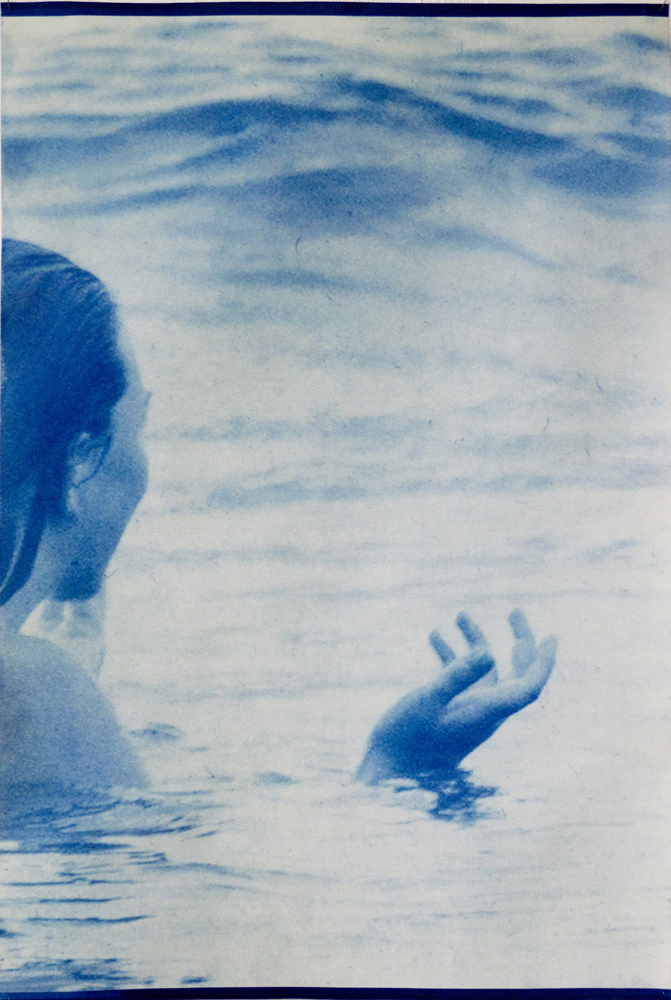Alternative Process Week: Alyssa Salomon: Cyanotype
This week Guest Editor and photographer Kat Kiernan shares the work of photographers working in alternative processes.
One of the earliest photographic processes, cyanotypes are known for their rich Prussian blue color. Two chemicals are mixed in equal parts and brushed by hand onto a surface. The negative is then contact printed in UV light and developed in water. Though cyanotypes are traditionally blue, there are many ways to tone the photograph with teas, coffees, and other toners for a variety of hues.
Tell Me Again The World Will Be Beautiful is series by Alyssa Salomon that embraces the many possibilities of the cyanotype medium with which to tell her story. The photographs are not constructed, but instead made almost illustrative in appearance by Salomon’s printing choices. Some images are intensely blue while others incorporate the van dyke process or toning to dull the vibrancy. For me, looking at each photograph is like recalling a long forgotten memory. The casual compositions of diverse subject matter combined with the range of hues remind me of family albums packed away.
My process has evolved to be much like that of a birdwatcher in the field; disciplined by skill, attuned to sight, and gifted by chance. But my purpose is to render the reality of the mind’s eye rather than the truth of the eye. My images begin with lens, but are realized through properties of printing process. Each picture is one of a kind, crafted with photographic chemistries, light, and hand work. I mix my photographic solutions from basic compounds, brushing them on handmade and fine papers to produce light-sensitive surfaces on which negatives are exposed. The final images, with velvety surfaces inherent to the van dyke and cyanotype methods and intensified with wax, are more like drawings than photographs, more like memories than documents.
I see my studio practice with handmade photographic processes as part of significant currents within contemporary craft, particularly the exploration of materials and intentionality around process. I use photographic printmaking the way a metal smith might approach the fabrication of jewelry: everything is fair game as material and structure. These images result directly from parts and methods. Stuff in front of a camera is starting point; printing is where the picture is made. Process, for me, is important and necessary but not sufficient nor point. Process gives me tools, for rendering for the viewer an evocative sensory experience, embodying physical delights of locating ourselves against boundaries of the natural world.
Alyssa Salomon, since getting her childhood Instamatic 104, has been testing how photography collects and remakes her favorite parts of the world, and to this end has been employing nineteenth century photographic chemistries on handmade surfaces for fifteen years. Her work is in a number of public and private collections including those of Virginia Museum of Fine Arts, Capital One, and The Valentine Richmond History Center; has been recognized with awards including two VMFA Professional Artist Fellowships, exhibited nationally and in Europe, and reproduced in print. Her solo exhibition, “Tell Me Again, the World will be Beautiful”, opens April 2014 at Washington & Lee’s Staniar Gallery (Lexington VA). Salomon apprenticed with daguerreotypist Bob Shlaer, and holds degrees from Kenyon College (BA) and University of Chicago (MBA). She teaches at Virginia Commonwealth University, Penland School of Crafts and the Virginia Museum of Fine Art Studio School. Salomon now lives and works along the Chickahominy River cypress swamp, not far from where Pocahontas saved John Smith. Salomon spends quite a bit of time with chickens (hers & those of others), is a compulsive, albeit late rising, bird watcher, a frequent kayaker, an obsessive bread baker, and now sporadic dj on WRIR 97.3FM. Representation: Candela Gallery (Richmond VA), Page Bond Gallery (Richmond VA), Soho Myriad (Atlanta, Los Angeles, & London), Penland Gallery (Penland NC).
Posts on Lenscratch may not be reproduced without the permission of the Lenscratch staff and the photographer.
Recommended
-
Carolina Baldomá: An Elemental PracticeJanuary 5th, 2026
-
Time Travelers: Photographs from the Gayle Greenhill Collection at MOMADecember 28th, 2025
-
Suzette Dushi: Presences UnseenDecember 27th, 2025
-
Ragne Kristine Sigmond: Portraits of Painterly LightDecember 2nd, 2025


































































